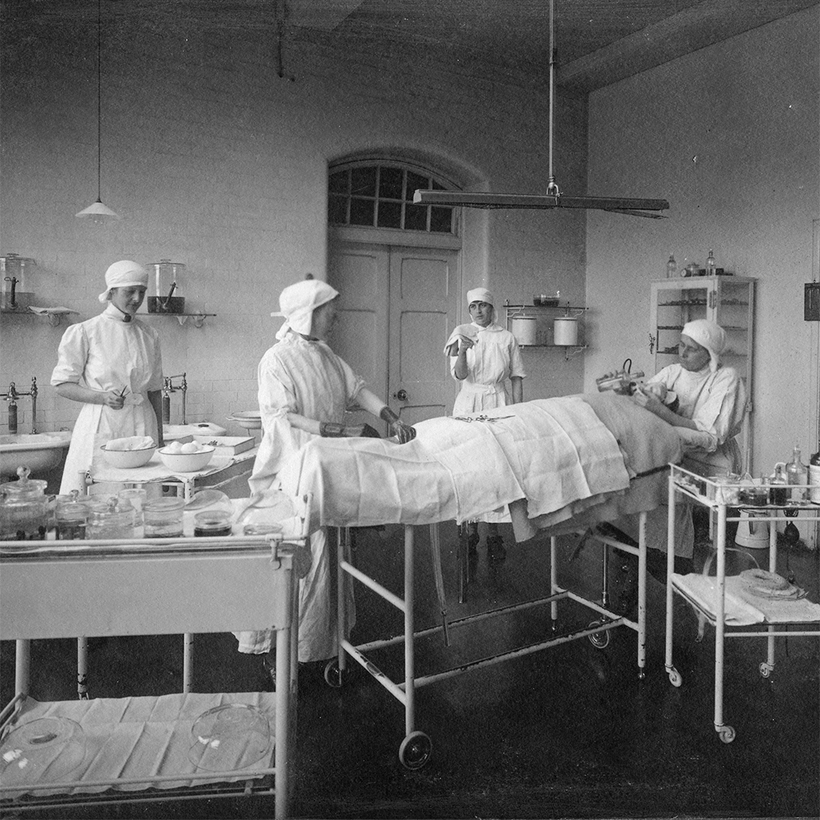What is war good for? Absolutely nothing, according to the 1970 protest song. History tells a different story. Wars cause death, disability, and disease on devastating scales. But they also lead to dramatic advances in medicine—and, in World War I at least, for women.
The battlefield has always provided doctors with unique opportunities to practice and improve their skills. The Greek father of medicine, Hippocrates, advised, “He who wishes to be a surgeon should go to war.” The sheer scale of casualties and range of injuries warfare produces have given surgeons in the past—and today—experience they never normally encounter in civilian life, forcing them to test and perfect new techniques. Diseases which can assume epidemic proportions in war challenge physicians to devise new therapies and methods of containment.
The First World War took this unholy equation to unprecedented levels. Millions of men were killed or maimed in bloody battles such as the Somme, but these atrocities also stimulated male doctors to develop innovative methods to mend gaping wounds, curb the spread of gangrene, and repair horrific facial injuries.
Women in the medical sphere played a role, too. Before the war, female doctors in Britain and elsewhere were confined to treating women and children in women-run hospitals. When war was declared, female doctors offered their skills to army officials in the U.K., Australia, and Canada, but their services were bluntly refused. One British woman surgeon was told, “My good lady, go home and sit still.” Many of these female doctors refused to sit still and offered their help instead to the Red Cross or allies overseas. Two British doctors, Flora Murray and Louisa Garrett Anderson, led the way.
One British woman surgeon was told, “My good lady, go home and sit still.”
Murray and Anderson were not just experienced doctors; they were active suffragettes and life partners. They were as eager as their male counterparts to serve their country, but they also realized that war gave women doctors a once-in-a-lifetime chance to prove they were equal to men. Just six weeks after war broke out, they took a team of women to Paris, where they ran a military hospital treating casualties from the nearby front line.
Their venture proved so successful they were invited by the British Army to run a second hospital in France, and then, in May 1915, to open a major military hospital in the heart of London.
Endell Street was unique. It was the only army hospital commanded by women, and apart from a handful of male orderlies, all its staff were female. It treated 26,000 wounded soldiers sent back from war zones across Europe. Although army officials predicted it would not last six months, it continued throughout the duration of the war and was hailed as a triumph by the press, the public, and the medical profession.
Endell Street stayed open for a year after the war, treating victims of the Spanish flu, before closing in 1920. Medical advances tested during the war became mainstream. But progress for medical women went into reverse. They had to wait decades more for equal rights within the medical profession.
Wendy Moore’s No Man’s Land: The Trailblazing Women Who Ran Britain’s Most Extraordinary Military Hospital During World War I is published by Basic Books

